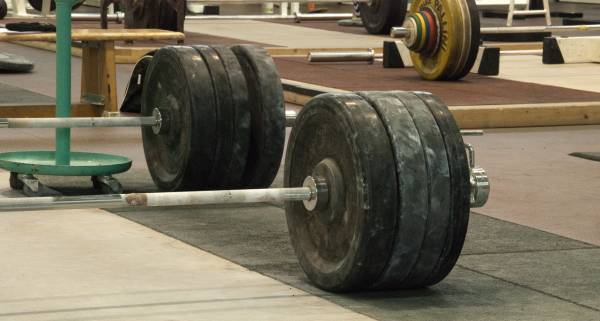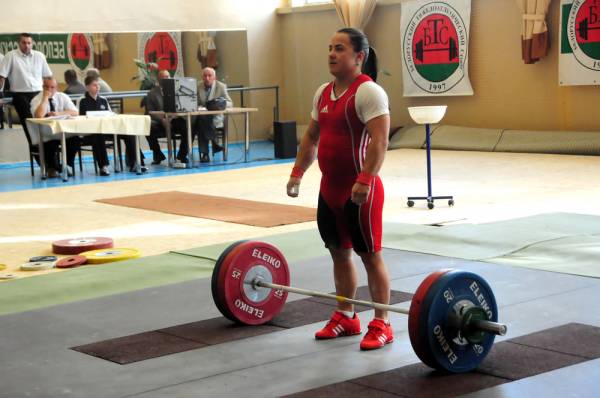There are many exercise modes in the fitness industry today that use music to enhance their workouts. There are a number of benefits to using the tunes.
Fighting boredom is one of the main uses. This is especially true with long cardio workouts where boredom is a definite risk. Another use is in adjusting the emotional tone of a workout. Heavy-duty aerobics will work better if a hard-driving type of music is used. Brahms is not in order here. Those doing yoga or other less active forms of physical activity may want to try Herr Brahms or perhaps some flute music by Zamfir.
But what about the weight sports of weightlifting, powerlifting, and general strength training? What is the general consensus on the use of music in the training hall?
Weightlifting and Music
The first thing you’ll notice is there is no general consensus. Some coaches are in favor of trying anything that will put their lifters in the mood to lift heavier weights. Heavy-duty classical, hard-driving rock, outlaw country, and who knows what else may be used to great effect. Heavy lifting requires a certain emotional engagement and music can help. An athlete cannot always conjure up the right mood from whole cloth.
I remember Bulgarian and Turkish lifter Naim Suleymanoglu mentioning that he, “likes the music of Mr. Nelson most” – meaning Willie Nelson. Whether he could translate the lyrics or not is unknown but perhaps the song On the Road Again might have been just what he needed to encourage his defection some years later. If this is all true, his record speaks for itself. Suleymanoglu went on to mention that many of the other younger Bulgarian lifters preferred music, but their coach, Ivan Abadjiev, was of a more conservative bent and would not always allow music in the training hall.
Those of the old school like to say that training is not meant to entertain. They preferred that the workouts be held in silence, all the better to hear the coaches’ instructions. This auditory approach has also had its share of success, so it is not easy to decide which approach is best. I think the secret lies in what type of training you are doing. If you are doing heavy squats, pulls or any other exercise that does not require a great deal of mental imagery to get engaged in what you are about to do, then music can be useful.
Every time I used to squat, I would always end up thinking about Manfred Mann’s old favorite Quinn the Eskimo. Somehow it just made me think about heavy squatting. At other times I liked Chicago’s Feeling Stronger Every Day. If you’re familiar with the tunes they speak for themselves.
The Application of Music in the Training Hall
At the start of the workout, when most weightlifters work on the classical lifts and where technique is paramount, then I can see the wisdom in turning off the boom-box. Lifters not only have to listen to the coach’s instructions, they also have to listen to their own internal dialogue. It is hard to psych up when your mind is in a lot of different directions.
I guess you can see which direction I’m heading. The use or non-use of music in heavyweight workouts depends mostly on the type of exercise being contemplated. Since most of the low-technique lifts are done towards the end of the workout and can be done to music, then lifters can have a little something to look forward to as the workout progresses. They start with the high technique, high concentration lifts and then it eases off as the workout progresses.
One problem you’ll inevitably have is the differing tastes in music. This is especially evident today when the number of musical styles is forever proliferating, each appealing to a different personality. Unless the gyms lifters all have the same tastes you will invariably have to work out a system where the different musical types have to be rotated. You can also work this into a reward system. Lifters who set a record or win a competition could be given the privilege of picking the music for a whole week.
In powerlifting, similar rules exist, even though you might assume that the lifts take less technique and concentration. This is not true at that sport’s highest levels. Technique becomes just as important in a bench, squat, or deadlift as it does in any of the quick lifts. And the lifters are just as variable in their responses. Some prefer silence before a maximum attempt, while others need to get cranked up as much as they can and use anything that might work.

Music in the Competition Setting
Moving out of the training hall, we see there is another issue arising, that of the use of music at competitions. I have seen this in both Olympic and power meets. The dead time between lifts is often filled with loud music, in instrumental style. (I guess nobody likes to hear their lyrics truncated every time the next lifter mounts the platform.)
Needless to say, this is also controversial, and often it’s a generational issue. Traditionalists want no music at all. Younger recruits of the sport don’t mind the noise. The issue gets more complex when you start considering the crowd. Nowadays it seems like people have short attention spans and need to have some kind of noise, and not just white noise, in the background at all times. This especially becomes an issue when a lot of the people watching are not died-in-the-wool lifting fans.
We held a recent competition in a high school where we got a lot of the students dropping in to watch the event but few of them cared all that much about lifting. (Anything is better than having to go to study hall in your spare period). Some of the students offered to play music between the lifts and in breaks. This was a different experience for us and took some getting used to. It seemed to go over well with the transient crowd. Without the music we might not have gotten much of a crowd at all.
If you do use music at a competition, it is ideal to have either good communication between the announcer and the music people or else to have an announcers override on the speaker system. That is a little harder to arrange, but is probably the best solution.

Press to Play
In summing up I would say that there is a place for music in the training and competition halls, but like the music itself, this is highly subject to the tastes of its listeners. If it helps, use it. If it doesn’t, don’t.
One final word: I was told by a veteran a member of the Winnipeg, Manitoba lifting fraternity that back in the 1950s although they did not play music during the lifts, they always removed the weightlifting equipment and had a dance in the hall afterwards. He was not sure if it helped anybody’s lifting, but it certainly made wives and girlfriends a lot happier after having to sit through the long three-lift competitions of those days. Bribery takes many forms.
Photos 1 & 3 courtesy of Shutterstock.
Photo 2 by Willi Wallroth (Own work, all rights released (Public domain)) [Public domain], via Wikimedia Commons.






